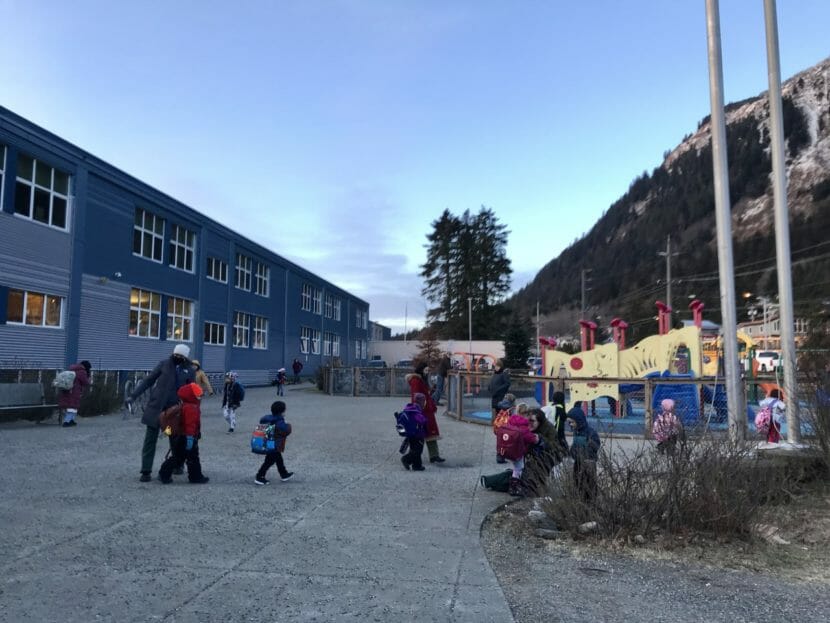
The Juneau School District has more than a hundred fewer kindergarteners than expected this year, and birth rate data shows the trend is likely to continue.
The district projected 390 kindergarteners would start this fall. Instead, just 282 did. Cassee Olin, the district’s administrative services director, said district leaders thought enrollment would be closer to pre-pandemic levels this year.
“We figured maybe we’d have more coming in just because the pandemic was lessening,” Olin said. “Things were going back to normal in classrooms. We’re not wearing masks, we’re not doing those kinds of things, so [we thought] families would feel more safe to be back in classrooms and bring their kids back to school.”
Data published by the state this month shows the total number of kindergarten-age students in Juneau – and all of Alaska – will likely continue to go down. Olin said the Juneau School District may have to consider closing or consolidating schools if the trend continues.
“It definitely impacts future planning, and how we want to tailor our education to the needs of the community,” she said. “In the next three or four years, there’s going to be a lot of decisions that need to be made.”
The fertility rate in Alaska has been declining for several years, said state demographer David Howell.
“Around 2010, we were at 2.3 children per woman,” he said. “Now we’ve fallen in Alaska to 1.9 children per woman, which is obviously not enough to replace the existing population. And Juneau has had a lower fertility rate than the state as a whole for a long time.”
Howell said there are many possible reasons behind the decline. In Juneau and other Southeast communities especially, a lack of affordable childcare may cause young couples to decide against having children. Youth outmigration might contribute to a lower total number of births. And the millennials who are still here are getting older.
“Once you get into your mid-30s and on, you see less and less births,” he said. “(Millennials) are really starting to hit those ages where we’ll start to see less births from them.”
The Juneau School District isn’t the only one dealing with lower than expected enrollment. In Anchorage, school administrators have cited birth rate data when discussing possible school closures and other budget cuts.
Howell said it’s too early to tell whether this overall decline is starting to level off in Alaska.
“But as far as the school-age kindergarten population goes, it’s going to go down going forward, just sheerly because of the number of births we’ve had over the last five years,” he said.
Olin hopes declining enrollment in Juneau, Fairbanks, Anchorage and other districts will show the state legislature the importance of increasing public education funding.
The base student allocation, the amount of money per student school districts receive from the state, hasn’t increased substantially in years. Meanwhile, inflation has driven costs up.
“If we don’t have adequate funding, our numbers in enrollment will continue to decline,” Olin said, “because families are going to leave the state of Alaska to find education that is getting funded at the level they need.”
She said enrollment projections for the 2023 to 2024 school year are underway.